Systemic Analysis of the DNA Replication Regulator MCM Complex in Ovarian Cancer and Its Prognostic Value
- PMID: 34178669
- PMCID: PMC8220296
- DOI: 10.3389/fonc.2021.681261
Systemic Analysis of the DNA Replication Regulator MCM Complex in Ovarian Cancer and Its Prognostic Value
Abstract
Microliposome maintenance (MCM) 2, MCM3, MCM4, MCM5, MCM6, and MCM7 are DNA replication regulators and are involved in the progression of multiple cancer types, but their role in ovarian cancer is still unclear. The purpose of this study is to clarify the biological function and prognostic value of the MCM complex in ovarian cancer (OS) progression. We analyzed DNA alterations, mRNA and protein levels, protein structure, PPI network, functional enrichment, and prognostic value in OC based on the Oncomine, cBioPortal, TCGA, CPTAC, PDB, GeneMANIA, DAVID, KEGG, and GSCALite databases. The results indicated that the protein levels of these DNA replication regulators were increased significantly. Moreover, survival analysis showed a prognostic signature based on the MCM complex, which performed moderately well in terms of OS prognostic prediction. Additionally, protein structure, functional enrichment, and PPI network analyses indicated that the MCM complex synergistically promoted OC progression by accelerating DNA replication and the cell cycle. In conclusion, our study suggested that the MCM complex might be a potential target and prognostic marker for OC patients.
Keywords: The minichromosome maintenance (MCM) complex; comprehensive bioinformatics; ovarian cancer; prognostic value; public databases.
Copyright © 2021 Li, Zou, Zhang, Quan, Cao, Zhang, Liu and Wu.
Conflict of interest statement
The authors declare that the research was conducted in the absence of any commercial or financial relationships that could be construed as a potential conflict of interest.
Figures


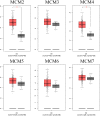
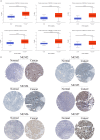

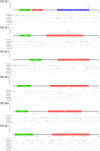
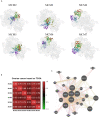
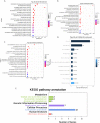
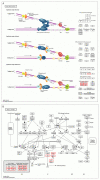
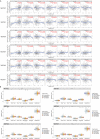
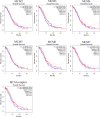
Similar articles
-
Bioinformatic Analysis of the Expression and Clinical Significance of the DNA Replication Regulator MCM Complex in Bladder Cancer.Int J Gen Med. 2022 Jun 7;15:5465-5485. doi: 10.2147/IJGM.S368573. eCollection 2022. Int J Gen Med. 2022. PMID: 35698656 Free PMC article.
-
Bioinformatics analysis of the transcriptional expression of minichromosome maintenance proteins as potential indicators of survival in patients with cervical cancer.BMC Cancer. 2021 Aug 18;21(1):928. doi: 10.1186/s12885-021-08674-y. BMC Cancer. 2021. PMID: 34404366 Free PMC article.
-
Prognostic value of minichromosome maintenance mRNA expression in early-stage pancreatic ductal adenocarcinoma patients after pancreaticoduodenectomy.Cancer Manag Res. 2018 Sep 5;10:3255-3271. doi: 10.2147/CMAR.S171293. eCollection 2018. Cancer Manag Res. 2018. PMID: 30233242 Free PMC article.
-
MCM family in HCC: MCM6 indicates adverse tumor features and poor outcomes and promotes S/G2 cell cycle progression.BMC Cancer. 2018 Feb 20;18(1):200. doi: 10.1186/s12885-018-4056-8. BMC Cancer. 2018. PMID: 29463213 Free PMC article. Review.
-
Regulation of MCM2-7 function.Genes Genet Syst. 2018 Nov 10;93(4):125-133. doi: 10.1266/ggs.18-00026. Epub 2018 Oct 23. Genes Genet Syst. 2018. PMID: 30369561 Review.
Cited by
-
Bioinformatic Analysis of the Expression and Clinical Significance of the DNA Replication Regulator MCM Complex in Bladder Cancer.Int J Gen Med. 2022 Jun 7;15:5465-5485. doi: 10.2147/IJGM.S368573. eCollection 2022. Int J Gen Med. 2022. PMID: 35698656 Free PMC article.
-
Probing the metalloproteome: an 8-mercaptoquinoline motif enriches minichromosome maintenance complex components as significant metalloprotein targets in live cells.RSC Chem Biol. 2024 Jun 25;5(8):776-786. doi: 10.1039/d4cb00053f. eCollection 2024 Jul 31. RSC Chem Biol. 2024. PMID: 39092446 Free PMC article.
-
Validation of ESM1 Related to Ovarian Cancer and the Biological Function and Prognostic Significance.Int J Biol Sci. 2023 Jan 1;19(1):258-280. doi: 10.7150/ijbs.66839. eCollection 2023. Int J Biol Sci. 2023. PMID: 36594088 Free PMC article.
-
Systemic analysis of the DNA replication regulator origin recognition complex in lung adenocarcinomas identifies prognostic and expression significance.Cancer Med. 2023 Feb;12(4):5035-5054. doi: 10.1002/cam4.5238. Epub 2022 Oct 7. Cancer Med. 2023. PMID: 36205357 Free PMC article.
-
KEAP1-NRF2 Interaction in Cancer: Competitive Interactors and Their Role in Carcinogenesis.Cancers (Basel). 2025 Jan 28;17(3):447. doi: 10.3390/cancers17030447. Cancers (Basel). 2025. PMID: 39941813 Free PMC article. Review.
References
LinkOut - more resources
Full Text Sources
Research Materials
Miscellaneous

